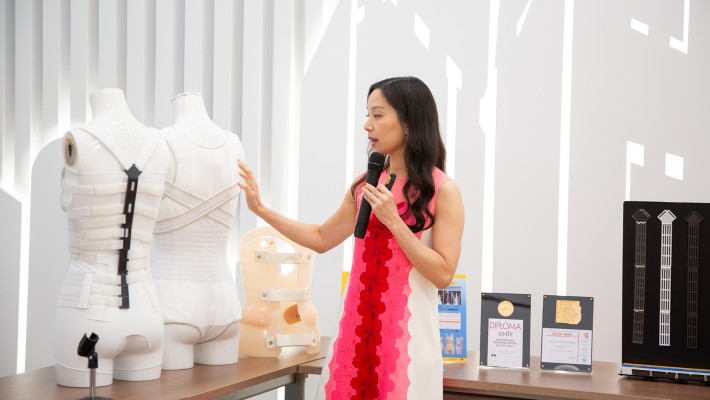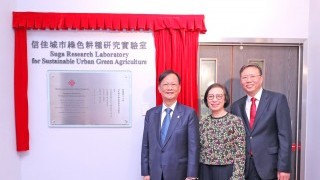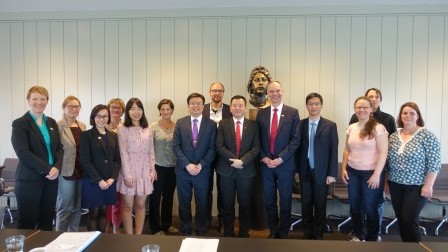Innovative braces benefit teens with scoliosis
Adolescent idiopathic scoliosis affects about 1-4% of teenagers in their early stages of puberty. Wearable scoliotic braces are most commonly used to treat this problem. Traditional braces are heavy, bulky and visible under clothes. The rigid design of these braces make it difficult for users to move, thus discouraging users from wearing them for a long period of time and affecting the effectiveness of treatment. In view of this, Dr Joanne Yip Yiu-wan of the Institute of Textiles and Clothing and her research team collaborated with the Department of Orthopaedics and Traumatology of the University of Hong Kong to develop two sets of flexible scoliotic braces adopting shape memory alloy struts and artificial hinges designs respectively. They are not only effective in correcting spinal curvatures, but can also tackle the discomforts and problems of conventional braces.
The flexible scoliotic brace with shape memory alloy struts is specially designed for mild scoliotic patients with 10 to 20 degrees of spinal curve. Shape memory alloy is rigid yet flexible and can revert back to its original shape. Therefore, it can fit the body contour of the patient while exerting pressure on the spine to achieve correction effect.
For moderate scoliotic patients with more than 20 degrees of spinal curve, the team has designed a flexible scoliotic brace made of carbon fibre artificial hinges and adjustable corrective panels. It applies the principle of three-point pressure system to correct scoliosis.
Allowing greater body mobility, the two sets of braces weigh 660 grams and 470 grams respectively, as compare to conventional braces which weigh more than 1,000 grams. Their underwear-like design also enables them to be easily hidden under clothing. Given the above advantages, users will be more willing to wear it for a longer period, thereby increasing the effectiveness in treating spinal deformity. It is also believed that future mass production of the brace will lower its current production cost of about HK$1,500.
The research team planned to partner with the Li Ka Shing Faculty of Medicine of the University of Hong Kong and The University of Hong Kong-Shenzhen Hospital to recruit 50 patients for clinical trials and data collection. In addition, the team is collaborating with an industry partner and is planning to launch the products in four to five years’ time.






